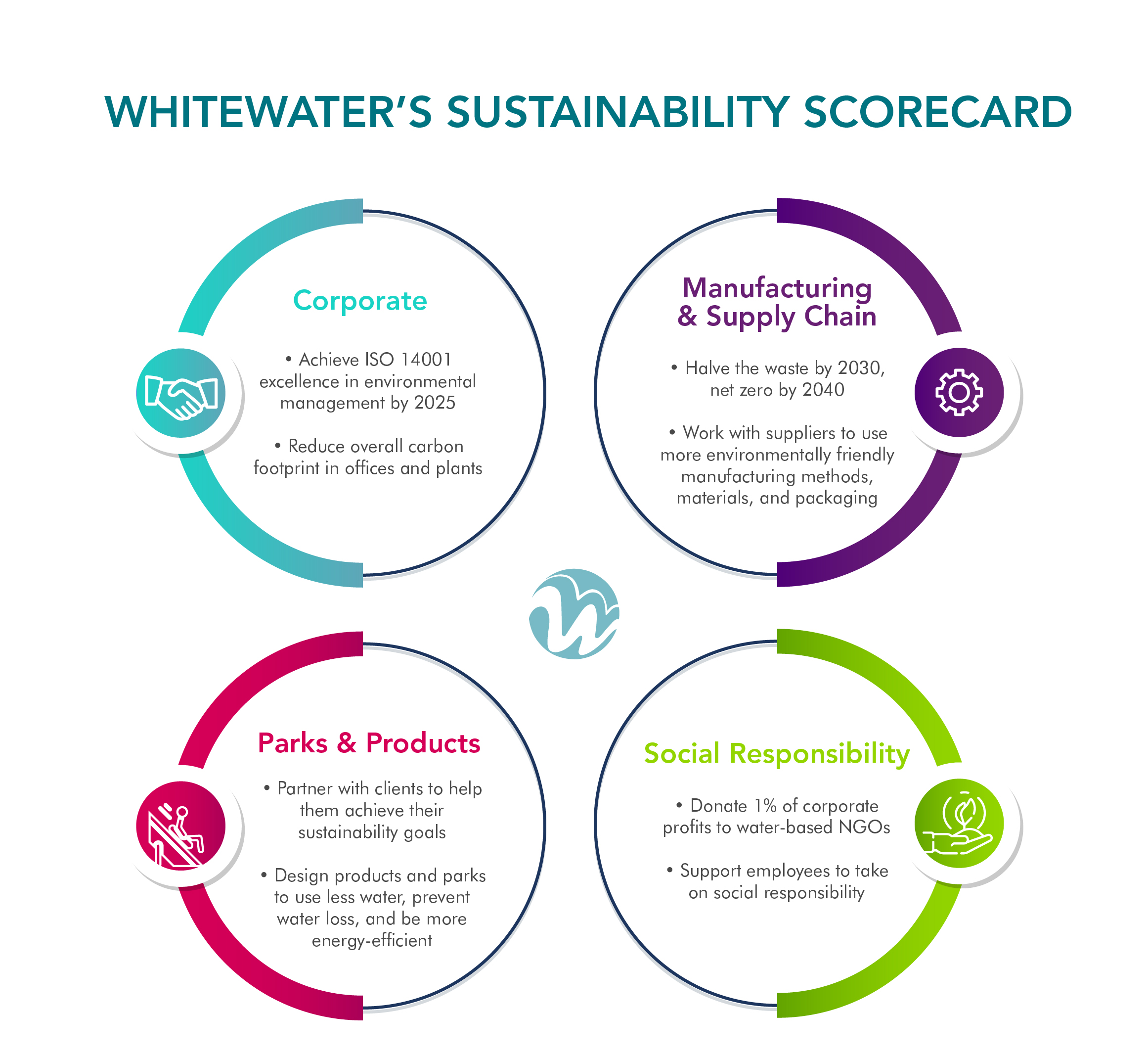With WhiteWater now placing an urgent focus on sustainability across the water park industry, a corporate-wide, structured approach has been introduced, called the Sustainability Scorecard. Our Scorecard consists of four parts: Corporate, Manufacturing and Supply Chain, Parks and Products, and Social Responsibility. This is part two of a five-part series, which we hope, will motivate players across the industry to take inspiration and join in with their own sustainability efforts.
ISO 14001 needs no introduction.
With this internationally recognized certification, you know that the company you are working with has implemented a solid environmental management system, embedded environmental thinking in the business strategy, and gives environmental goals the same consideration as profit goals.
That’s the kind of company WhiteWater wants to be by 2025.
With a process for defining environmental goals, implementing sustainable practices, and reporting the activities and results, ISO will make sure that we walk the talk. It is a major part of the Corporate aspect of WhiteWater’s Sustainability Scorecard. This part encompasses our day-to-day operations in both our offices and our plants.
To begin, we examine our carbon footprint in each area of our operations, determine where we are right now, and where we want to be in the coming years.
Quick Wins to Keep the Momentum
We have already found a few points to improve on. For example, the pandemic has forced organizations all over the world to realize, with evidence, that conducting business online is not only feasible, it’s acceptable. This global disruption is paving a way to reducing emissions associated with travel and commuting. Companies, including WhiteWater, can calculate how much emissions they have avoided as a result and make plans to adjust their way of doing business post pandemic.
What does this mean concretely for WhiteWater?
“With our #1 pillar of success being the success of our clients, we look to take learnings from the pandemic in doing business online and invest in systems that allow us to improve on our carbon travel footprint while maintaining the best customer experience in the industry,” said Emily Colombo, Vice President of Strategic Partnerships. Things like flexible work from home policies, investing in resources in our global offices to reduce cross continental travel, carbon offsets, and the use of drones in testing and commissioning are some ways we will lower our carbon footprint.
The above are examples of “quick wins,” achievable actions that don’t require an enormous effort, deliver an immediate benefit, and keep the momentum going toward long-term goals.
Other actions we will implement in the coming year that would make a noticeable impact on the environment are:
- Moving to a paperless office
- Eliminating single-use plastics
- Reducing power consumption by powering down
- Removing bottled water delivery service
- Improving composting, recycling, and garbage services
- Using hand dryers instead of paper towels in the washrooms
- Providing infrastructure to make cycling to work easier

Learn, Measure, Share, Repeat
More transformational actions will take place in the coming years as we identify benchmarks, learn, measure, and take guidance from external sustainability professionals. We will continue to share with the attractions industry the insights we are learning along the journey.
“The aim of the Corporate area of our Sustainability Scorecard is to weave environmental thinking into the fabric of our being—the way we live, the way we work,” said Una de Boer, Director of Global Marketing and Strategy. “We don’t pretend to have all the answers now; no one does. That’s why it’s essential that industry players put our heads together to develop solutions for sustainable businesses.”
So that in the future, sustainability initiatives would need no introductions.
In the next blog, we’ll explore the Manufacturing and Supply Chain part of our Sustainability Scorecard.
Read more about WhiteWater’s sustainability commitment at https://www.whitewaterwest.com/sustainability.
